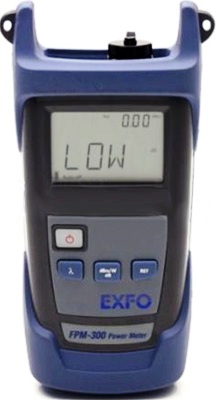
|
|
The Exfo FPM-302 Optical Power Meter automatically uses the proper calibration parameters when combined with the FLS-300 or FOT-300 source units. With a high-power option and 10 calibrated wavelengths, the FPM-300 is the most complete, yet simple power meter available. Combined with the FLS-300 or FOT-300 source units, which can transmit with a wavelength-identification digital encrypted protocol, the FPM-300 automatically uses the proper calibration parameters. This auto-wavelength recognition feature reduces the need for communication between the two technicians and decreases the potential for error. This product is part of EXFO's series of FTTx optical test products. It allows for the testing of passive optical networks (PONs) at the three main wavelengths (1310, 1490 and 1550 nm) used in fiber-to-the-home (FTTH) and fiber-to-the-premises (FTTP) networks and complies with the ITU-T G.983 and G.984 Recommendation series and the IEEE 802.3ah standard. Signal encrypting can also give the receiving end information on the power to be used as reference, helping ensure efficient referencing, even when the two units are far apart. Thanks to its unique design, the FPM-302 power meter reduces measurement time in typical measurement situations, as the need for an offset nulling is eliminated.Power meter port Ge. Power range (dBm) 10 to –60. Range displayed (dBm) Down to –65. Number of calibrated wavelengths: 10, (830 nm, 850 nm, 980 nm, 1300 nm, 1310 nm, 1450 nm, 1490 nm, 1550 nm, 1590 nm and 1625 nm.). Power uncertainty ± 5 % ± 1 nW (FPM-302). Resolution (dB) 0.01. Automatic offset nulling Yes. Warmup time (s) 0. Display units dB/dBm/W. Automatic wavelength recognition Yes. Screen refresh rate (Hz) 3. Tone detection (Hz) 270, 1 k, 2 k. Battery life (hours) (typical) > 300. Size (H x W x D) 18.5 cm x 10.0 cm x 5.5 cm (71/4 in x 4 in x 21/8 in). Weight 0.4 kg (0.9 lb).
|